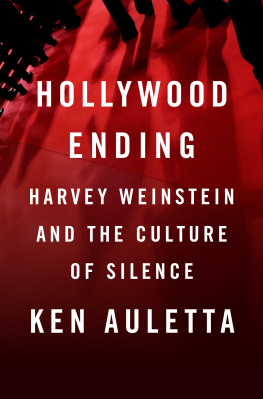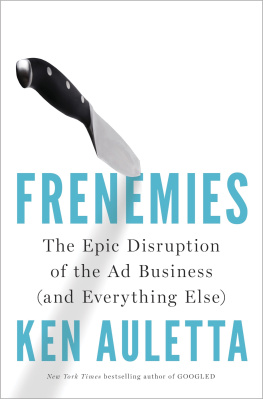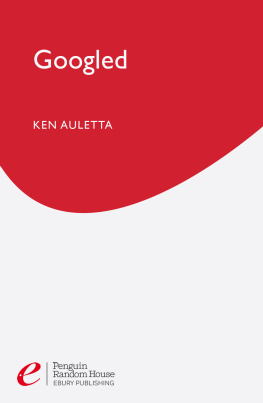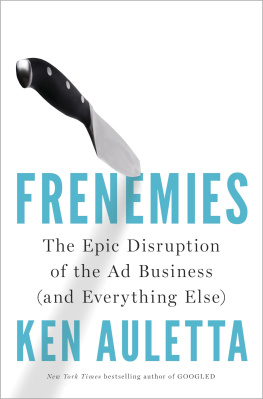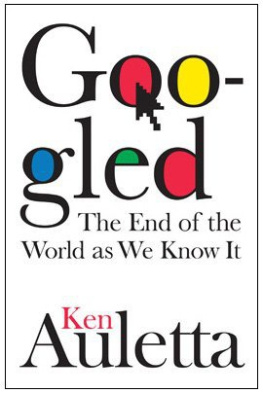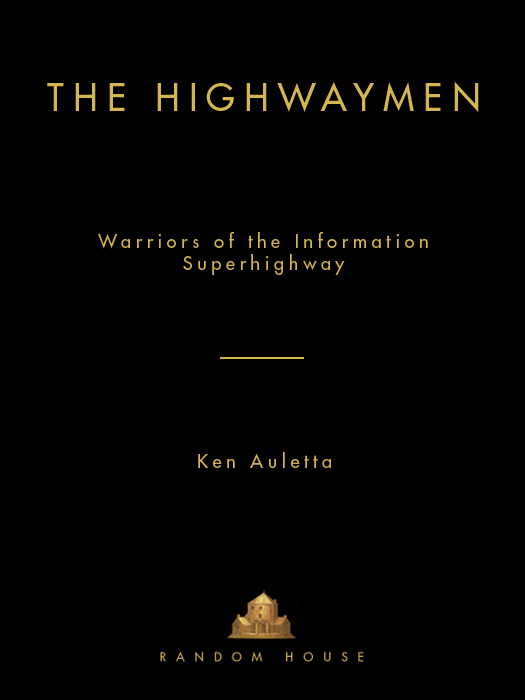Copyright 1997 by Ken Auletta
All rights reserved under International and Pan-American Copyright Conventions. Published in the United States by Random House, Inc., New York, and simultaneously in Canada by Random House of Canada Limited, Toronto.
All of the essays in this work were originally published in The New Yorker in different form. A small portion of the introduction was originally published in the Media Studies Journal of the Freedom Forum.
Grateful acknowledgment is made to U.S. News and World Report for permission to reprint an excerpt from an article by John Leo (March 27, 1995). Copyright 1995 by U.S. News and World Report. Reprinted by permission.
Library of Congress Cataloging-in-Publication Data
Auletta, Ken.
The highwaymen : warriors of the information superhighway / Ken Auletta. 1st ed.
p. cm.
eISBN: 978-0-307-79985-2
1. BusinessmenUnited StatesBiography. 2. TelecommunicationUnited StatesBiography. 3. High technology industriesUnited StatesBiography. I. Title.
HC102.5.A2A95 1997
3388.04O92273dc21 96-39714
Random House website address: http://www.randomhouse.com/
v3.1
C ONTENTS
I NTRODUCTION
The information revolution has changed the way we work, play, learn, shop, bank, retrieve information, and govern ourselves. In 1980, few people could purchase a VCR. They were too expensive, too complicated. Today VCRs are in 90 percent of American homes. As recently as 1979less than two decades agothere were no PCs, no fax machines, no cellular phones or CDs, no MTV or CNN. And no one had yet invoked the term information superhighway.
Over the Internet or through interactive television, we can or will soon be able to summon news, data, books, catalogues, magazines, movies. We will use computers to pay our bills, order groceries, buy and sell stocks, simulate sex, play the lottery, and register to vote.
That science will make this possible is certain. Whether consumers will wantor can affordthese services remains a mystery. No one can foresee the social consequences of these changes, and we dont yet know what impact instantaneous access to information (or disinformation) will have on deliberative democracy.
Nor do we know what delivery system will be ascendant. Will information and entertainment be delivered by a cable or telephone wire? Or through a direct-broadcast satellite dish? Will more-powerful computers be the TV screens of the future? Will telephone calls be made over the Internet? How will traditional broadcast networks compete with five hundred or more channel choices? Will networks survive because they are familiar life raftsbrandsin a churning sea of choices?
No one can predict the final contours of this electronic revolution, but we do know this: Changes in the way we communicate will be profound. Elementary-school children will not only read and be told about ancient Egypt, they will experience it by summoning virtual images of pyramids and figuratively floating along the Nile. With electronic tools, more citizens will work at home. Corporations will become less hierarchical as middle managers and others begin to talk directly to CEOs through e-mail. Many layers of management will become superfluous. File cabinets will be discarded, as information will be stored in computer files. In unpredictable ways, computers will alter the importance of geographic proximityand reshape cities. Work, and play, will be transformed.
This collection of sixteen New Yorker articles spans a four-year period, from 1992 to 1996a time of tumultuous change in the communications industry, in which, in the words of The Economist, the introduction of the PC caused the largest creation of wealth in the history of the planet. The net worth of Microsoft, Intel, and Compaq$130 billion in 1995exceeded that of all of Hollywoods film studios. And the burgeoning Internet may soon dwarf this. Today, the entertainment/information business, with $350 billion in domestic and overseas sales, has supplanted jet engines as Americas foremost export. And this market is only half the size of the worldwide telephone business. Those who strive to dominate this volatile new worldthe Highwaymenare the subjects of this book.
The Highwaymen begins with Barry Dillers 1992 quest to discover the future, using his PowerBook as a guide. Diller found that his laptop freed him from secretaries, meetings, and memos, and would help him envision the possibilities of a new interactive electronic democracy. By following Dillers journey we discover how a tiny chip can transform dumb TV sets into smart ones, how viewers may soon be able to program for themselves rather than rely on network programmers to tell them when to watch 60 Minutes, Seinfeld, or an HBO movie. With a click of a switch, viewers may soon have instant access to a video jukeboxa hit movie, a shopping channel, a local council meeting, tomorrows New York Times. The televisionor computercould become the equivalent of a personal secretary or agent, setting aside favorite programs or news clippings, gathering information on stocks or bonds.
With advances in compression technology, digitalization, and microprocessing, the intoxicating dream of five hundred or more channels was soon off the drawing boards and ready for testing. By 1993, Diller had decided to link his fate with QVC, a low-budget home-shopping network. His principal partner was John Malone, the CEO of Tele-Communications, Inc., the nations and the worlds largest cable company, and a part owner of QVC. Malone, an enigmatic man who avoided media interviews, was among the most powerful businessmen in America. In early 1994, when my profile of him (The Cowboy) appeared, he was championing a merger with another powerful distributor, the cash-rich Bell Atlantic telephone company.
To combat Malones capacity to collect tolls from program suppliers, men like Sumner Redstone of Viacom and Michael Eisner of Disney strove to become so indispensable as brand-name suppliers that no distributor could deny them access to customers. In September 1993, Redstone announced that he would swallow Paramount. Although challenged by Diller, whose QVC had soared in value, Redstone won the bidding war, and Viacom entered the front ranks of worldwide entertainment software companiesat least on paper.
With the communications business promising growth and riches and glamour, new players joined the fray. Among the new Highwaymen was Edgar Bronfman, Jr., whose Seagram Company purchased 15 percent of Time Warners stock in 1993. This set up a conflict, explored in No Longer the Son Of, between two men who were seeking to escape from the shadows of dominant personalitiesBronfman from his fathers shadow, and Time Warner chairman Gerald Levin from the shadow of a predecessor, Steve Ross.
Words like synergy, leverage, branding, convergence, and partnership soon became the rage of the communications business. The proliferating communications-company mergers, sales, and alliances were spurred by investment bankers. Among these, the foremost matchmaker was Herbert Allen (The Consigliere), who shepherded the sale of Columbia Pictures to Coca-Cola and then to Sony, and who sold MCA first to Matsushita and then to Seagram.
Within communications, government is often viewed as an impediment, but when Newt Gingrichs Republican majority claimed Congress, companies felt they had a potent ally. The relationship between the government and the communications/entertainment conglomerates is explored in The Referee, a piece on the FCC.


